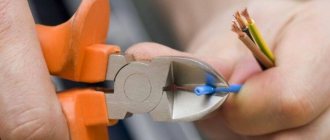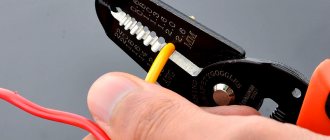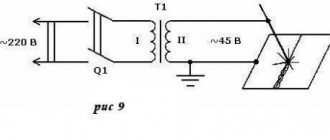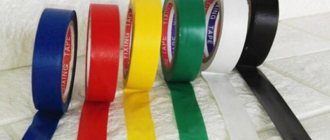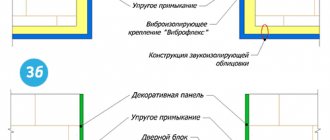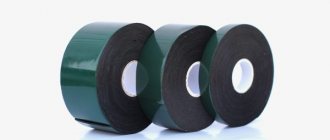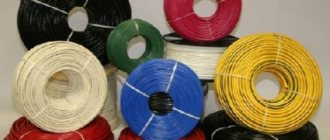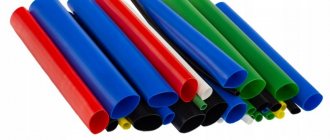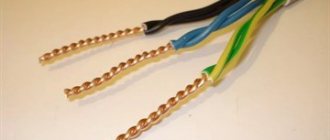Semi-automatic tools
Semi-automatic wire stripping tools can significantly simplify the entire process and speed it up at the same time.
Wire strippers
Tongs of this design are the most affordable option on the market and will undoubtedly come in handy in the household. They are not intended to work with wires with a cross-section of more than 6 mm2.
When choosing a cheap model, you should personally check its performance. Alas, the quality of Chinese goods is not high, so in half the cases you may end up with a specimen that either squeezes the wire too much, cutting the wires, or, on the contrary, slips along the insulation. In addition, the durability of cheap models is also a big question. However, for one-time work it is quite suitable.
Price – from 180 rub.
However, there are expensive branded instruments that do not have most of the listed disadvantages. But their price is appropriate - 10 thousand rubles is not the limit.
Stripping pliers
This is the most universal tool, which is designed for stripping insulation from wires of different types and different cross-sections, to which it automatically adapts. Although some models also have manual adjustment for better performance.
With their help, it is convenient not only to remove insulation from the ends, but also to expose arbitrary areas. They can also handle various types of wires, including flat stranded, twisted pair, etc.
Price – from 800 rub.
Device for stripping wires: types, cost, methods of stripping wires
Any electrical installation work involves the need to strip conductors. Everyone performs this procedure in a way that is convenient for them. Some use a cutter, others use side cutters, while others invent often useless devices.
However, there have long been tools on the market that can help in this matter. But how convenient and effective they are, you should understand in detail. And is it even worth spending money on a stripper or is it easier to get by with familiar tools? This is what we will talk about today.
Nuances that should be taken into account when removing insulation from conductors
Many people do not attach much importance to what tool to use to strip the insulation from cable cores. However, it is the tool that plays an important role in the durability of the mounted connection.
For example, you can consider using a conventional cutter. If you cut the insulation along its entire length, you can damage the live wires of the flexible cable.
If you cut the insulation in a circular manner, then grooves are formed on the cores, along which they can subsequently break off.
PHOTO: drive2.ru Various tools can be used to strip cable cores
The same can be said about stripping cores using side cutters. Of course, a professional electrician with experience will freely remove the insulation with any tool without damaging the wires, but there are only a few such specialists.
What about those who do not have sufficient experience? In this case, some advise making a special device for removing insulation.
Of course, there are “individuals” who use their own teeth to strip cables, but the editors of Homius warn the dear reader against such actions. Still, human teeth are intended for something slightly different.
Homemade devices for stripping wire cores, and is it worth using them?
There are many videos circulating online in which “craftsmen” advise making a device for removing insulation from a paper knife and a plastic cover. At first glance, it may seem that such a device is functional and even useful. However, you should not make hasty conclusions.
PHOTO: .com You should not trust such homemade products - there is a high risk of damaging not only the cable, but also your hands
When working with such a device, a cut inevitably forms on the surface of the current-carrying conductor. The slightest bend at the cut site will lead to a fracture of the metal. However, these are not all the pitfalls. Using such a device is quite dangerous. There is a high risk of cutting yourself, and given the sharpness of the blades, the injury can be very serious.
PHOTO: i.stuff.co.nz If you use homemade products, you should be prepared for this
In general, when carrying out electrical installation work, you should not “reinvent the wheel”.
Manufacturers offer many different tools to make such tasks easier. Moreover, the cost of these devices is low, which means that everyone can purchase them.
So is it worth the risk using various handicrafts?
Other methods of removing insulation from wires
A fairly common method among people is using matches or a lighter. It is as follows. The part of the wire insulation required for stripping is heated and then removed manually. It must be said that the method works, subject to certain nuances.
PHOTO: Pinterest You can use a lighter to remove the insulation, but be extremely careful
Firstly, when implementing it, accuracy is required. Otherwise, there is a high risk of getting burned. And secondly, the method is only suitable for thin conductors with a small cross-section. And using open fire is at least unsafe.
PHOTO: primelestiri.md The consequences of careless handling of fire can be extremely sad
Using a professional stripping tool
Today, on the shelves of electrical goods stores there is a huge assortment of special tools for removing insulation, called a stripper.
The instrument is presented in various price categories, which allows you to purchase it without compromising the family budget. As of October 2022, you can purchase a stripper for a price starting from 100 rubles.
Such a tool is quite suitable for one-time work. As for the cost of professional strippers, their price can reach 20,000 rubles or even more.
PHOTO: shopper.life The simplest stripper resembles side cutters with slots on the working surface
What is a stripper
In appearance, the simplest stripper resembles side cutters, on the working surface of which there are recesses for conductors of various sections. They protect the current-carrying part of the cable from damage. The master only needs to choose the right size.
PHOTO: shopper.life Such a stripper may cost little money, but for one-time work it is quite suitable
Strippers can be manual, semi-automatic, or automatic with electric drive.
Also, various models can cut the core insulation both along the conductor and across it. There are even ultra-precise devices designed to work with fiber optic cables.
However, for one-time work performed by home craftsmen, such expensive devices are useless.
PHOTO: vsehoztovari.ruAnd this is an automatic stripper used by specialists at work, although it is also quite suitable for home use
To summarize the above
Buying a stripper or removing insulation the old fashioned way using improvised means is a personal choice for everyone. However, given the low cost of the simplest devices, such a tool will not be superfluous.
After all, no one wants to completely replace the cable because the core being stripped has broken off and become too short to connect.
It’s much easier to spend 100 rubles one day and not worry about the quality of the stripping.
Stripping power cable insulation
Power cables are used mainly for laying conductors to powerful equipment and distribution panels. How to remove the outer layer of cable insulation?
- Slowly cut the insulating layer from the end along the cable, but not very deeply.
- Using pliers, pull out one core at a time located inside.
- Cut off the remaining piece from the outer insulation.
- We cut the wires.
Before you begin this work, carefully consider how much insulation you will need to remove. It is better to cut with a small margin. If you expose a piece that is too long, you can always cut off the excess. Use a cambric to better position the cable inside the device.
And finally. Various tools for stripping wire insulation and how to use them video.
How to properly remove insulation without defects?
The protective coating of any stranded copper wire must be dual-functional: strong and at the same time elastic. In other words, do not allow moisture on the copper and subsequent oxidation of the wire and easily allow for partial necessary removal from the core. Our step-by-step instructions will help you on how to properly strip wires.
What kind of damage can be expected from unprofessional stripping of a wire end?
- reducing the cross-section of the conductor;
- fractures of part of the copper threads in the core and a drop in strength characteristics;
- hidden defects when using blunt stripping devices - from stretching and bending;
- loss of part of the copper threads in the multistrand;
- contamination with residual insulation of the conductor.
Why cutting cables and wires is beneficial
If we approach this issue from a commercial point of view, then extracting metal from waste wire products can become a source of additional income. The average price at collection points for non-ferrous scrap metal per 1 kg is:
- copper – 400 rub.;
- brass – 240 rub.;
- lead - 100 rubles;
- aluminum – 110 rub.
Important! It is unprofitable to recycle cables and wires because processing enterprises incur the costs of removing the insulating coating from wire products to recover the metal. Therefore, delivery may cost more than the profit from delivering the insulated cable
The metal of wires and cables contains a minimum of impurities, so it is valued much higher than any other type of scrap. With a skillful approach, you can quickly strip flexible electrical conductors in your home workshop. To do this, you will need special equipment - a cable cutting machine (stripper).
Recommendations for choosing a tool
When choosing cable stripping mechanisms, pay attention to the following characteristics:
- Maximum and minimum diameter.
- Availability of replaceable knives.
- Adjustment of diameter and depth of cut.
- Additional operations.
- Manufacturer.
If the tool is used occasionally for personal needs, they opt for simple devices, taking into account the parameters of the cable used. When performing electrical work during independent repairs, choose devices with a wide spectrum of action that cut the wire, crimp the ends of the conductor, and remove the insulation.
If possible, use devices where there is no need to select holes according to the diameter of the conductor; the mechanism adjusts the parameters automatically. For long-term use, purchase high-quality tools from reliable manufacturers.
Manufacturers
Products from the German company Knipex are considered reliable in Russia. The automatic stripper Knipex KN 1262180 is used for single and multi-core wires with a cross-sectional area of 0.2-6.0 mm2. The tool adjusts to the diameter automatically and carefully removes the insulation. The long head will provide access to a secluded corner.
To bare coaxial cables use Knipex KN-166005SB. The tool removes the outer shell, screen protection and insulation in one pass. Equipped with three built-in knives, each adjustable to depth using a hex key. The insulation is cut off when the stripper is rotated 360 degrees.
Jokari JK 30140
The German company Jokari produces the Jokari JK 30140 stripper, designed for PVC-coated cables. This automatic device is used at conductor branch points.
The Stanley FMHTO-96230 automatic stripper does not require lengthy setup. The length of the section is set, and the diameter is adjusted by itself. Used for round and flat multi-core cables, all cores are cleaned at the same time. Suitable for cables with a diameter of 0.2-2.6 mm. Its weight is 350 g.
At home, when used rarely, use the universal wire cleaner Greenlee PA1117. The stripper is equipped with 6 holes with diameters from 0.64 to 2.6 mm, and an additional device for cutting flat cables. Weight 185 g. Not used for armored and steel cables.
The Jonard JIC-4366 stripper is equipped with two blades, one for removing the outer sheath of the cable, the other for removing PVC insulation. Blades are replaceable. The device is convenient to work with rigid insulation.
There are times when it is necessary to strip the insulation from a thin conductor (0.25-0.8 mm) or remove hardened coating from old cables. For this purpose, thermal strippers OK ST-500ESD are used. Under the influence of heat, the braid melts and is easily removed. Such a tool is rarely used in everyday life, is not universal, and requires the removal of harmful substances from melting insulation.
OK ST-500ESD
Greenlee PA1117
Jonard JIC-4366
Stanley FMHTO-96230
Reflow method
Cleaning with a soldering iron
If you have a soldering iron, you can quickly remove the insulation using the thermal method. To do this, heat the soldering iron tip and run it lightly over the plastic insulation. Once heated, the plastic will melt and come off. This method does not disrupt the conductor in any way. If you need to strip a large number of wires with such a winding, it is recommended to use a special device. For example, a special wood burning tool, which was previously known as a “Pattern,” would be suitable.
The reflow method is most effective if your wiring is old. After a long period of use, the plastic winding on the wire becomes hard and brittle. Moreover, if the wire protrudes two or three centimeters from the junction box, neither wire cutters nor a knife will be able to handle it. And if you use a lighter or reach in with a soldering iron, you can strip the wire.
Do-it-yourself cable cleaning machine - Metalworker's Guide
It is always safer and more convenient to carry out any electrical work using tools specially designed for this. A beginner and a more experienced builder need a tool for removing insulation from wires that does not damage them. You also need to remember about security issues.
Working with electrical wiring requires extreme caution. Even a minor mistake can cause a short circuit, damage to equipment or a fire. Separately, it is necessary to dwell on the accuracy of the manipulations performed. Only a properly selected tool will provide this.
Quickly removing insulation from a wire is not an easy task, but it can be done. It is a mistake to use only the blade for this purpose.
This is explained by the desire to remove the sheath of a wire or cable with your own hands as quickly as possible. In this case, there is no need to talk about the quality of the manipulations performed.
Even an experienced hand can't always do everything right the first time.
It can be difficult to choose the right tool for stripping wires.
There is a high probability of damaging the surface of the cable without removing its insulation. Violation of the integrity of veins and connections is another problem that arises when using the blade.
A specialized tool for cleaning the cable from the braid will help you avoid these problems. Most often, WireStrippers are used in this case.
Literally, this English phrase can be translated as a wire remover or stripper.
The device has the following advantages:
- A hand-held device allows you to pre-measure the thickness of the insulation that needs to be removed;
- The stripper has several operating modes, thanks to which wire stripping is carried out quite quickly;
- The connection quality of even a thin wire does not change;
- The presence of a mechanical limiter that prevents damage to the wire;
- If the gadget is used correctly to clean the surface, then its guaranteed service life is unlimited.
Safety, accuracy, speed - three qualities that characterize a mechanical sheath puller. It is quite simple to use, which does not eliminate the need for special skills. On the one hand, the device allows a preliminary measurement of the thickness of the shell, and, on the other hand, it is capable of removing it with pinpoint accuracy.
How to strip wires from insulation: tools and their types
A properly selected device will help you quickly remove the wire from its sheath. It’s not easy for a beginner to do this; the main thing you need to remember is that the key to success is the ability to correctly determine the type of material.
Carrying out such common electrical work as stripping wires, connecting circuit breakers and sockets is much more difficult without electrical tools.
Based on the information collected, a tool is selected. The information provided on the product will help make life easier for a novice installer.
The list opens with the WS-04B cleaner - a professional electrical installation tool. It is used to remove insulation of any thickness.
The removal mechanism is designed in such a way that the gadget independently determines the thickness of the winding.
Based on the information collected, a decision will be made on the minimum and maximum required load.
The mentioned stripper is also used for cutting cables.
If the buyer does not need a multifunctional gadget, then you should pay attention to several more budget options:
- KSI is used to process wires with many thin cores. Insulation stripping pliers are not a professional tool that can literally “pry” the winding and carefully remove it.
- Semi-automatic and automatic – professional cable cleaner. With these pliers you can easily remove the sheath even from a cable whose thickness varies along the entire length of the wire.
- Simple - the device is used at home to clean the wire from a thin sheath. Unfortunately, in this case, it will not be possible to ensure jewelry precision cleaning.
Strippers are used to remove windings of varying thickness from the cable surface. They are differentiated according to several criteria. The ability to work with thin shells or too thick ones, the presence of a preliminary measurement system, and so on. If the device will only be brought into the house, then it is better to limit yourself to a budget option.
The device in detail: a stripper for removing insulation from wires
A sharp blade and multiple indentations are two of the most common features of a budget stripper. Depending on the manufacturer, the knife comes in several modifications.
In order not to overpay for options that are not in demand, you must familiarize yourself with the technical characteristics of the product before purchasing.
First of all, attention should be paid to the radius of the existing rings for fixing the wire.
Wire stripping is performed on thousands of conductors every day, usually using professional tools
Secondly, your gaze should be directed to the width of the blade. The thicker it is, the more difficult it is to strip copper wires.
If we talk about other components, they look like this:
- Regulator of the length of the exposed area - the best VVG stripper for home use always has this option;
- Stop regulator - thanks to its presence, you can save copper wires from winding that is too thin;
- A working area that has no signs of damage or manufacturing defects;
- The machine must have at least two pairs of jaws;
- The cross-sectional size of the cores that can be processed using individual pliers.
A budget and professional gadget for removing various types of insulation has several significant components. A stripper with a blade of the required thickness and a length adjuster will help you quickly and with maximum precision cut an aluminum cable.
Using a cable cutting knife
Returning to basics, we need to remember another way to remove insulation. In order to remove the wire, a special knife is required. As mentioned earlier, a knife cannot be replaced with a blade, otherwise the quality of the work performed cannot be guaranteed.
Before purchasing it, you need to carefully study its characteristics. The list opens with the ability to remove insulation from wires with a minimum and maximum cross-section.
It is better when the machine is designed for a range from 0.4 to 6 square meters. mm. If we are talking about a larger cross-section, then it is recommended to use forceps or pliers.
The following characteristics are no less important:
- Ability to perform crimping of tips with sizes from 0.5 to 6 square meters. mm.;
- Cutting cables whose cross-section does not exceed 6 square meters. m;
- Ability to withstand up to 200 sharpening cycles.
You can work with wires using a special knife, but not a blade. In this case, a person with a confident hand will make a cut of the required size without disturbing the structure of the wires and the cable itself.
Other Stripping Tool
To work with non-standard materials or in hard-to-reach places, a special machine is used - an automatic gun for removing insulation. Less commonly used is a plow stripper.
The peculiarity of both options is that they have an oblong or curved shape, respectively.
The presented varieties are ready to strip wires whose cross-section is in the range from 0.05 to 0.2 square meters. mm.
The most important thing when removing insulation from wires is not to damage the conductor itself and not to damage the insulation where it should remain
In addition, both devices will be useful in a number of other significant manipulations with wires:
- Suitable for firing non-insulated sleeve NShVI;
- Carrying out insulation of the bushing NShVI;
- In the case where it is necessary to separate small scrap from a thick shell, the tool will help reduce the amount of waste;
- Copper, aluminum and other valuable metals are less susceptible to melting by KVT insulation if several cuts are first made at both ends;
- If a burner is used, then all work is done without smoke;
- Adjusting the length of the treated surface will help to burn the cable surface without unnecessary damage;
- Capable of separating non-ferrous metal from unnecessary shell.
Using side cutters
Stripping with side cutters
Tools such as side cutters are often used incorrectly
The tool is picked up as needed, and no attention is paid to the direction of the cutting edges. If you use side cutters incorrectly, you will have to put in a lot of effort.
In addition, in this case there is a high risk of breaking off the wire along with the insulation.
It is important that the cutting edges are directed in the direction opposite to the movement of the tool. With this option, the blade will cut into the insulation even with little force
As a result, the insulation is removed with a tube from the surface of the core without damaging it.
Stripper manufacturing procedure
A small semicircular recess is marked on one of the bars and then cut out with a jigsaw.
Then the wooden blocks are glued together so that there are pre-prepared wooden spacers between them.
On the outside, all edges of the wooden block are sanded so that they are free from chips, splinters and burrs.
A hole is drilled on one side of the glued block. The blade of the knife is inserted into the gap between the bars so that the hole on it coincides with the hole drilled in the wood. After this, it is secured inside the wooden part using a regular screw and nut.
Features of working with machines for armored cables
Armored cable is a universal conductor of electric current. Unlike simple insulated wires, the metal braiding of the conductor gives it special strength and creates reliable protection from external negative factors.
The armor is a two-layer spiral shell made of steel tape. The cross-sectional structure of the armored cable is shown in the lower figure.
Cross section of armored cable
Removing metal tape requires a powerful power unit and durable, sharp disc blades. Industrial machines are equipped with cutting units that can clean several armored cables of different diameters at once. This is due to the need to process large quantities of wire products per work shift.
Note! Passing through the cutting block, the knife cleans the cable from the surface polymer or rubber hose, electrically conductive screen (armor) and PVC belt insulation. Only factory-made machines can remove metal insulation
They are large units. After the armor is removed, as a rule, three insulated cores are obtained. They are cut on the same machine, placing them in other openings of the cutting block
Only factory-made machines can remove metal insulation. They are large units. After the armor is removed, as a rule, three insulated cores are obtained. They are cut on the same machine, placing them in other openings of the cutting block.
Stripper for cutting armored cable
Stripper designs and sequence of their operation
Stripper for cutting armored cable – Video:
Modern mechanical machines make it possible to process cables with a diameter of 100...150 mm or even more, and several cables can be cut at the same time. The cable cutting machine consists of the following components:
- Upper block with built-in upper knife;
- Roller straightening device;
- The drive shaft, on the console of which a movable knife is installed;
- Drive, including an electric motor and gearbox;
- Frames;
- A thrust block that creates pressure on the cable to be separated;
- Control panel;
- Adjustable stop unit;
- Wedge mechanism for transverse cable shift.
In some designs, the clamping and moving functions are performed by one unit - the thrust block.
The choice of equipment is made based on the diameter of all cable cores, as well as the value of the torque that the machine drive is capable of developing.
Another video - a special machine. designs for cutting acidified polyethylene cable:
Mechanized cable cutting is performed in the following sequence. Before removing the insulation, the cable is cut into pieces up to 1.5...2 m long (the dimensions are determined by the geometric parameters of the coil being wound). Next, the part of the cable to be processed is leveled by the roller feeder and fed into the working area of the knives.
Many designs of the equipment in question are capable of cutting not only the insulation, but also the armored braiding of the cable. Such designs often include a transition between braid sorting and insulation, which increases the efficiency of the cable stripping process.
To allow the machines to operate in continuous mode, they are additionally equipped with lubrication stations that provide effective lubrication of working units.
Types of equipment
For small volumes of work, purchasing expensive equipment is not practical. Home craftsmen assemble simple devices for cleaning small-diameter wires; they also make quite complex universal strippers for cutting cables.
Simple device
The easiest way to strip a wire from PVC insulation is to make a device from the following materials:
- two wooden blocks measuring 40 x 40 x 400 mm;
- two screws 90 mm long with M 8 nuts;
- painting or stationery knife.
Step by step assembly:
- The bars are tightened with a clamp.
- Stepping back from the ends of the planks by 40 mm on both sides, the planks are drilled through.
- The screws are threaded through the holes and the wooden elements are tightened with nuts.
- 6 holes ø from 2 to 12 mm are drilled along the connection line.
- Before stripping the wires of insulation, insert a knife blade into the gap.
- The tip of the cutter is placed in the middle of the opening of the required diameter.
- The nuts are finally tightened. The device is ready for use.
Remove the insulation as follows:
- Having loosened the nuts, the knife is moved to the desired hole, the bars are tightened again;
- the wire is inserted into the opening so that its end comes out on the other side of the device;
- Having grabbed the core with pliers, pull the entire wire through the hole;
- metal wires are separated from the insulation and given a compact shape.
Universal stripper
In order to strip wire products in relatively large volumes, you will need a universal machine. Making it yourself is not easy. Experience and skill in handling and availability of metalworking equipment will be required. As a last resort, having made drawings, the parts can be made in the nearest workshop.
To assemble a homemade stripper you will need:
- steel sheet 8 mm thick;
- two bevel gears;
- rod with threaded M 8;
- round steel rod ø 8 mm;
- L-shaped lever;
- M 8 nuts and washers.
Step-by-step instructions for assembling the machine:
- According to the drawing, the metal strip is marked using a tape measure and a marker.
- An angle machine with a diamond wheel is used to cut the metal into assembly elements.
- Corner slots are made in the strip. Along these lines, the workpiece is bent into a frame, resulting in a stripper body.
- They also make a movable U-shaped frame of the cutting unit.
- The side walls of the housing and block are drilled on both sides.
- A shaft with rollers mounted on it is inserted into the housing.
- An L-shaped handle is attached to the end of the shaft.
- A shaft with a disk knife is inserted into the holes of the inner frame.
- The cutting disc is made from a flat washer, the edges of which are sharpened using sandpaper.
- An M8 nut is inserted into the pre-drilled hole in the upper platform in the center.
- Screw in the rod, the lower end of which is secured in the hinge seat of the cutting block using a spring washer.
- By rotating the rod handle, you set the height of the gap between the knife and the drive rollers.
- Insert the end of the cable into the opening and begin to turn the handle.
- Instead of a lever, an electric motor is installed, the shaft of which is connected to the axis of the feed rollers.
Additional information. This instruction is advisory in nature. Each master is free to add or come up with his own design for a cable cutting machine. The main thing is the principle of pulling the wire along the cutter blade.
The topic of the article “Do-it-yourself cable cutting machine drawings” is of interest to those people who can realize themselves in this type of business, such as extracting non-ferrous metal from waste wire products. Today, cutting cables and wires at home using a homemade machine is a great idea for earning extra income.
Universal option
If you have basic plumbing and carpentry skills, it is easy to assemble a machine for cutting any type of cable. A universal design made from scrap material will help get rid of insulation. Due to its compactness, the model does not take up much space in the workshop.
Source sdelaysam-svoimirukami.ru
I assemble a homemade stripper from the remains of multi-layer plywood. Using a saw, I cut out rectangles, dimensions (in cm):
- 7*12;
- 15*15;
- two 7*8.
I make through holes in identical elements on the machine. Then I paint all the wooden parts with blue enamel. After drying, I place a strip of construction tape in the center of small pieces of glue, two for large ones. I cover the surface of the material with red paint.
Source sdelaysam-svoimirukami.ru
Using a crown tip, I cut out 2 circles from plywood. I drill holes in the middle of the ovals. Using a grinder, I remove the chamfers from the ends and protect the surfaces with varnish. I'm starting to assemble the structure. Carefully remove the tape from the rectangles.
In the center of one of the small parts (7*8 cm), I secure the bearing in the housing with self-tapping screws. In the second figure, I screw a nut onto the elongated bolt, then chamfer the disks inward. I complete the design by fixing another bearing.
A 15*15 cm rectangle plays the role of the base. At the corners of the part I secure plastic supports (legs) with screws. On top of the small elements I place a medium-sized plate (7*12) and screw it on the sides with self-tapping screws. For reliability, it is better to cover the ends with glue.
Source sdelaysam-svoimirukami.ru
On top I glue an oval made of plywood, into the holes of which I insert a blade. I fix the structure with a driving nut. I screw the bearing to a 15*15 cm rectangle, placing it closer to the edge. To cut the cable, I thread the end into the center of the machine. The knife grasps the veins and, when pulled towards itself, cleans the plastic.
Source sdelaysam-svoimirukami.ru
Manufacturing and operation of individual components
DIY power supply for 12V screwdriver
The stripper consists of several main components, these are:
- frame;
- feed unit;
- cutting block;
- power block
Design of the cutting machine
Feeding unit
The assembly consists of tapered rollers mounted on an axis, which rests on bearings in the side plates. The axle protrudes beyond the frame and is connected to the drive shaft of the power unit.
Cutting block
The unit is a U-shaped frame consisting of two side plates and a horizontal platform. An axis with a cutting disk is mounted at the bottom of the frame, which rotates on a bearing on one of the sidewalls.
A vertical rod is inserted into the platform, which can rotate around its axis. The top of the threaded rod passes through the housing top plate nut. A handle is attached to the end of the rod.
Power block
The feeding unit is driven by an electric motor, the shaft of which can be connected directly to the knife axis or through a transmission system (gearbox, belt). For small volumes of work, a simple lever is used as a propulsion device. It is activated by simple rotation by the worker’s hand.
To summarize the above
Buying a stripper or removing insulation the old fashioned way using improvised means is a personal choice for everyone. However, given the low cost of the simplest devices, such a tool will not be superfluous. After all, no one wants to completely replace the cable because the core being stripped has broken off and become too short to connect. It’s much easier to spend 100 rubles one day and not worry about the quality of the stripping.
PHOTO: buildoman.ru To strip many veins you will have to spend a lot of time and effort
We really hope that the information presented today was useful to our dear reader. The editors of the online magazine Homius will be happy to answer any questions that may arise during the reading process. You just need to state their essence in the comments below. And one more thing - let's try to determine the number of readers who think that it is better to make a stripper with your own hands, and those who think otherwise. Please also leave your opinion in the discussions. If you liked the article, don't forget to rate it. And finally, we suggest watching a very useful video that will more fully reveal today’s topic. Take care of yourself, your loved ones and be healthy!
Electrician's knife with heel
This product is one of the types of electrician's knife. It is also called plow. This is a convenient device for removing the casing. It has a short, inwardly curved blade; at the tip of the blade there is a special device called the “heel”. The main purpose of this “heel” is to limit the depth of the cut when working with double insulation, when it is necessary to remove the top layer of braid, and not affect the insulation of the internal wires.
The platform at the tip of the blade facilitates the longitudinal sliding of the device when removing the top layer of protection and prevents the tip from catching the internal wires. The device is excellent for cables with hard cores (VVG), but it is worse at removing a soft sheath, such as PVA (it worsens the sliding of the heel). In general, this is a useful tool for removing insulation in the work of an electrician.
Why an electrician's knife provides safety
If you consider any professional tool, what catches your eye is:
- comfortable handle made of non-slip plastic, well held by hand;
- short but thick blade with a wide approach angle.
This was done on purpose. It is convenient to use such a knife even under voltage: it is difficult for them to trim a metal core, but it is convenient to remove insulation from a wire and cut a cable.
I have come across cases where “masters” believed that such sharpening was incorrect and changed the angle of approach and the cutting edge on the emery wheel, thereby damaging the electrician’s knife.
Special tool
Cutting wires and cables containing an outer sheath can be greatly facilitated by specialized devices. In recent years, a knife with a heel at the end of the blade has gained popularity.
It works in three stages:
- The piglet is inserted from the end of the wire under its sheath, supported by the insulation of the cores.
- The blade is guided by hand along the cable to the cut point.
- The cut insulation is pulled apart to release the wires.
This allows you to reliably and safely remove the top dielectric layer of protection.
pilot project =cable cutting machine=.
pilot project =cable cutting machine=. There was a topic somewhere on the forum about this, but I couldn’t find it. It was done by eye. Latest photos (idea). The German gearbox seems to turn well from the assembly line. (I didn’t count the revolutions, it’s fine) aluminum and naturally gnaws plastic in years too. Well, the photo is something like this.
Attached images
pilot project =cable cutting machine=. During the work, a flaw was discovered. you need to weld a panel with a hole like a guide (or a piece of pipe mm 50). Since when a piece of cable leaves, the end of it is screwed to the side, as a result, a piece of mm 100 remains uncut. (depicted the same type)
Attached images
Post edited by wiliam: 31 October 2013 — 22:06
pilot project =cable cutting machine=.
Great. I also want to do something similar, but for a thin single-core wire. Instead of gears, it would be cooler to have two rollers with a semicircular groove and a notch, like in a semi-automatic welding machine.
pilot project =cable cutting machine=.
Yes, I didn’t do any special preparation, so they did it by eye. If only it was a test, it could be done in a wide-profile manner for different thicknesses. It’s still incomparable when one person cleans the cable with a knife.
pilot project =cable cutting machine=.
Class! Recently I gutted just 100 meters, or maybe more, of cable by hand.
pilot project =cable cutting machine=. Good afternoon! I’ve also been wanting to do something similar for a long time, but I can’t find bevel gears. Can you tell me where these gears can be removed?
Post edited by Vitalink: 28 November 2022 — 12:57
pilot project =cable cutting machine=.
Classic rear axle
Page 2
The section is intended for publishing topics about completed projects of forum participants.
The main requirements for the description are the availability of information necessary for repetition (description of the process, technologies, materials, drawings and photographs). Only projects directly related to hobby activities can be posted in this section. Commercial projects and projects carried out in the main job can only be placed if the basic requirements are met. Publication in the form of a photograph of the final product without a description of the manufacturing process is prohibited; use the blog or post photos in the gallery. Additional information on the rules here: https://www.chipmaker...showtopic=26019
- You cannot create a new topic
- Mark this forum read
| Posted by Technophile, 24 Jan 2012 |
|
| Posted by Bluebird, 02 Oct 2011 |
|
| Posted by ilia, 30 Aug 2015 |
|
| Posted by ilia, 25 Nov 2009 |
|
| Posted by ilia, 04 Jan 2014 |
|
| By Dio Eraclea, 04 Mar 2017 |
|
| By Chernitsky, 31 Dec 2017 | |
| Posted by Vova 100, 25 Jan 2018 | |
| Posted by Andreyka, 02 Dec 2013 |
|
| Posted by kuvandik, 05 Nov 2016 |
|
| Posted by AlexKokon, 23 Oct 2017 |
|
| Posted by bambr, 21 Jan 2018 | |
| Posted by lmmnd9, 21 Jan 2018 | |
| Posted by RZ296, 10 Nov 2013 |
|
| Posted by maverick_62, 18 Nov 2012 |
|
| Posted by milorad, 17 Jan 2018 |
|
| Posted by fedotov, 07 Oct 2014 |
|
| Author Oleg A., 26 Sep 2013 |
|
| Posted by burewestnik, 01 Oct 2016 |
|
| Posted by Gideon, 20 Dec 2016 |
|
| Posted by Striketul, 09 Jan 2018 | |
| Posted by Udarnik1, 15 Nov 2017 |
|
| Posted by Udarnik1, 25 Oct 2017 |
|
| Posted by Bolto-gryz, 06 Jan 2018 | |
| Posted by Bolto-gryz, 17 May 2017 | |
| By YURAD, 16 Oct 2017 |
|
| By AVK2801, 16 Mar 2014 |
|
| Posted by Pavel Svarshik, 09 Oct 2017 |
|
| By Dio Eraclea, 01 Jan 2018 | |
| Posted by Nikolay Z, 25 Mar 2015 |
- You cannot create a new topic
www.chipmaker.ru
